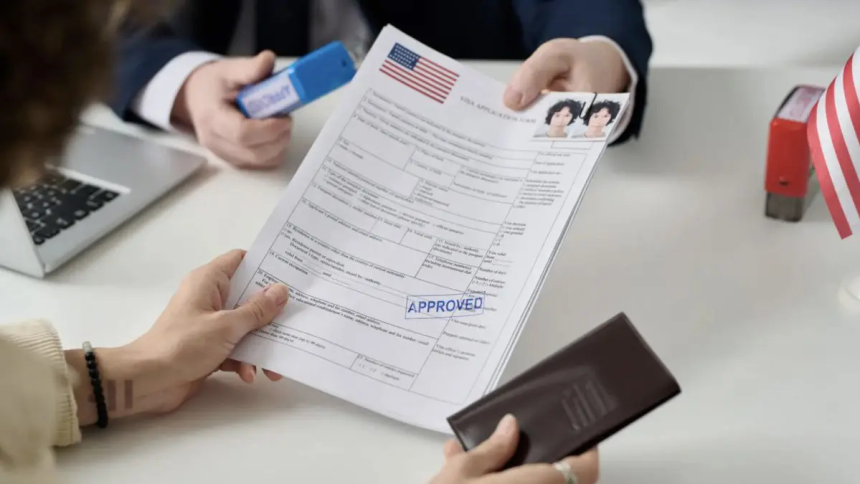Stuck in the Green Card Gridlock? 2025’s EB-3 Backlog Survival Guide
Imagine sitting in traffic for 15 years. No exits. No shortcuts. Just endless waiting. For thousands of EB-3 visa applicants from India and China in 2025, this isn’t a metaphor– it’s reality. Current data shows Indian nationals stuck in a 12-year backlog, while Chinese applicants face a 5-year limbo. “My priority date became a running joke at work,” shares a Reddit user who started the process in 2020. “We’ve had three office moves, two CEOs, and one pandemic–still no green card.” But here’s the twist: strategic navigation can turn this gridlock into forward motion. Let’s explore how.
The State of EB-3 Backlogs: A Snapshot
India and China: The Long Haul
For Indian nationals, the EB-3 Final Action Date (the cutoff for green card approvals) is stuck in February 2013 as of May 2025. Chinese applicants face a slightly better but still daunting date of August 2020. At this pace, new applicants from these countries could wait 10–15 years for visa availability.
Reddit users echo the struggle. One applicant shared, “I started my PERM process in late 2022. By 2025, I’m still waiting just to file my I-485”. Another lamented, “It’s like running on a treadmill- you’re moving, but going nowhere”.
Rest of the World: Slow but Steady
While the “Rest of the World” (ROW) category fares better, progress is sluggish. The Final Action Date inched forward to January 2023 in May 2025, a mere 2.5-month advance since October 2024. With ~16,000 pending applications from early 2023, even ROW applicants face a 3-5 year wait.
Strategy 1: Premium Processing–Pay to Play
Premium Processing isn’t a magic bullet, but it’s a valuable tool. For $2,805, USCIS guarantees a 15-day decision on I-140 petitions (the employer-sponsored green card application).
Why It Works
- Faster I-140 approval locks in your priority date sooner, securing your place in line.
- H-1B extensions: Approved I-140s allow indefinite H-1B renewals beyond the standard 6-year limit.
Limitations
- Only speeds up the I-140 stage–doesn’t bypass visa bulletin waits.
- Not available for PERM labor certifications or I-485 applications.
Strategy 2: Concurrent Filing–Double Down
If your priority date is current, file Form I-485 (Adjustment of Status) alongside your I-140 petition. This “concurrent filing” tactic lets you:
- Obtain a work permit (EAD) and travel document (Advance Parole) in 3–6 months.
- Avoid separation from family if your H-1B expires mid-process.
Catch: Dates must align. In April 2025, USCIS allowed concurrent filing only for applicants with priority dates before January 2023.
Strategy 3: Optimize the PERM Process
The PERM labor certification– a prerequisite for EB-3– takes 8-12 months if done right. Mess it up, and you’ll add years. Here’s how to streamline it:
1. Craft a “Normal” Job Description
The Department of Labor (DOL) rejects “overqualified” roles. For example, requiring a master’s degree for an entry-level IT job invites scrutiny. Keep requirements aligned with industry standards.
2. Ace the Recruitment Phase
Employers must advertise the job locally to prove no qualified U.S. applicants exist. Reddit users stress: “Even one overlooked U.S. applicant can derail everything”. Tips:
- Use niche job boards over general platforms.
- Document every application meticulously.
3. Prevailing Wage Wisdom
Submit wage requests early. Errors here cause 3–6 month delays.
The Country Cap Conundrum
Only 7% of EB-3 visas go to any single country annually. For India and China, demand outstrips supply by 10:1. While legislative fixes (like eliminating country caps) are debated, applicants can:
- Explore EB-2/NIW: The National Interest Waiver skips PERM but requires exceptional ability.
- Consider EB-5: Investor visas have shorter waits but require a $800,000+ investment.
When All Else Fails: The Human Factor
1. Congressional Help
Contact your U.S. representative to flag extreme delays (e.g., medical emergencies).
2. Stay Updated
Visa bulletins shift monthly. Set calendar reminders to check the USCIS website every 10th of the month.
3. Humor Helps
As one Redditor joked, “I’ve aged two generations waiting. My grandkids might file my I-485”.
The Road Ahead
EB-3 backlogs won’t vanish overnight, but strategic moves can shave years off your wait. Prioritize PERM precision, leverage premium processing, and stay agile with concurrent filing. For those in the longest queues, exploring alternative visa categories or policy advocacy might be the key.
In the end, the EB-3 journey is a test of resilience. As immigration lawyer Chelsea Spinos notes, “Persistence isn’t just a strategy– it’s the only way through”.
Partnering with EB3.Work: Cutting Through the Clutter
EB3.Work simplifies the EB-3 maze by linking applicants with U.S. employers in high-demand sectors (hospitality, construction) offering 70+ entry-level roles. Their attorneys streamline PERM approvals, avoiding recruitment ad pitfalls and wage errors, while leveraging 15-day premium processing to lock priority dates faster.
The Finish Line: Smart Moves for Long Waits
Surviving 2025’s backlogs demands:
- Concurrent filing for work permits.
- Visa bulletin vigilance (check monthly).
- Alternative visas if timelines clash.
For employers, EB3.Work bridges labor gaps. As CEO John Dorer puts it: “Shortages are chances to build stronger teams.” Applicants echo this: “They turned my decade-long wait into a structured plan.”
In the immigration marathon, the right partner doesn’t just guide– they redefine the race. Stay resilient, stay ready.
Lynn Martelli is an editor at Readability. She received her MFA in Creative Writing from Antioch University and has worked as an editor for over 10 years. Lynn has edited a wide variety of books, including fiction, non-fiction, memoirs, and more. In her free time, Lynn enjoys reading, writing, and spending time with her family and friends.















